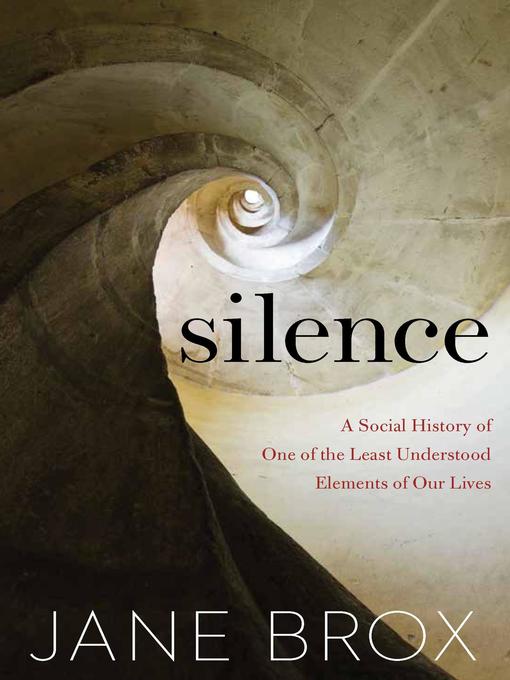
Silence
A Social History of One of the Least Understood Elements of Our Lives
کتاب های مرتبط
- اطلاعات
- نقد و بررسی
- دیدگاه کاربران
نقد و بررسی

October 15, 2018
The nuances and complexities of silence.Brox (Creative Writing/Lesley Univ.; Brilliant: The Evolution of Artificial Light, 2010, etc.) moves from the openness and space found in her earlier, well-received books on farms to places far more confining. This poignant and somber book is as much about solitude as it is silence. It's also a social history of buildings and people who inhabit them, primarily prisons and monasteries, and the silence, whether imposed or invited, that inhabits those within. The author begins with the history of Philadelphia's Eastern State Penitentiary. Built in 1829, it was largely inspired by Founding Father Benjamin Rush's belief in a "new kind of justice," the "silent and separate incarceration of criminals." The plan was to make prisons "as forbidding and repellent as possible." Throughout, Brox intimately imagines its first prisoner, Charles Williams, an 18-year-old black farmer, personally experiencing the horrors and sufferings of prison life. The author then transitions to a historical examination of the monastery and the monks who chose a life of voluntary imprisonment as a means to achieve a more spiritual life. Silence, monastic chants, and prayers were an integral part of their daily lives, as was community, something Williams was forbidden. A large part of the book explores the austere life and writings of the famous Trappist pacifist monk Thomas Merton and his life at Kentucky's Abbey of Gethsemani. Brox touches on many diverse topics, including the lives of nuns in monasteries and the horrific World War II bombing of the Monte Cassino monastery, and invokes many voices, including Dickens, Thoreau, Eugenia Ginzburg, a prisoner of Stalin's Great Purge, author Doris Grumbach, and Brox's "own most profound encounter with silence." She concludes that silence can be many things, from an unwelcome punishment or a "lifelong commitment" to a "deliberate inquiry" or a "last resort."A perceptive and subtle meditation about a "true reckoning with the self."
COPYRIGHT(2018) Kirkus Reviews, ALL RIGHTS RESERVED.

February 1, 2019
In this study, Brox (nonfiction writing, Lesley Univ.; Brilliant: The Evolution of Artificial Light) examines the role and effects of silence in penitentiaries and monasteries over many years. While silence was once imposed on prisoners as a punishment, it was freely accepted by those entering monasteries as a means of deepening their spiritual lives. Nineteenth-century prison founders believed that isolation and silence would lead to convicts' redemption but failed to see potential dangers in such practices, including a loss of contact with reality and risk of insanity. In contrast, monastic silence was not absolute but intermingled with chanting, reading aloud, and limited conversation. Thomas Merton is cited as a monk who thrived on silence and solitude, although he continued to speak out in his writings about the secular world's concerns. Silence and isolation are now gone from most American prisons and many monasteries are closed, their silent life vanishing in an increasingly noisy world. Brox's balanced account shows both the positive and negative aspects of silence and points out the need to be attuned to our inner voice in a world of constant distractions. VERDICT Will appeal to readers interested in the effects of this alternative to the noise of modern life.--Denise J. Stankovics, Vernon, CT
Copyright 2019 Library Journal, LLC Used with permission.

December 1, 2018
Brox (Brilliant: The Evolution of Artificial Light, 2010) approaches the social history of silence from an obvious (in retrospect) and significant place: solitary confinement in America's prison system. Her disturbing history of Eastern State Penitentiary, near Philadelphia, a facility designed and built with the complete silence of its inmates as a central tenet, will stun readers with its Founding Father origins and far-reaching consequences. Gracefully shifting from that dark and desperate locale, Brox moves to the sustaining silence embraced by American Trappist monk, activist, and writer Thomas Merton, then turns to the historical use of enforced silence as punishment against women. With each skillful shift in her narrative, Brox reveals how easily silence has been woven into society, where it is used alternately as weapon and balm. Her ability to juxtapose prisons and monasteries, fear and peace is remarkable, and her graceful prose, which appears effortless, draws upon a wealth of research. This is history at its most effective: elegant, essential, and provocative. Those with an interest in prison reform should be particularly drawn to these thought-provoking pages.(Reprinted with permission of Booklist, copyright 2018, American Library Association.)

























دیدگاه کاربران